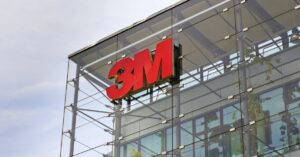- Earnings per Share (EPS) of $0.61 missed the expected $0.96, indicating a downward trend in profitability.
- Revenue of approximately $567.7 million surpassed the estimated $543.2 million but represents a 3.5% decrease year-over-year.
- The company’s financial ratios reveal a high debt-to-equity ratio of 10.61 and a current ratio of 0.26, highlighting potential financial risks.
Dave & Buster’s Entertainment, Inc. (NASDAQ: PLAY) is a well-known American restaurant and entertainment business, combining dining and arcade gaming experiences. Despite its popularity, PLAY’s recent financial performance has shown some challenges in a competitive market.
On June 10, 2025, PLAY reported an EPS of $0.617, below the expected $0.96. This underperformance is consistent with the company’s quarterly earnings of $0.76 per share, missing the Zacks Consensus Estimate of $0.96 and marking a decline from the previous year’s EPS of $1.12.
Despite the earnings miss, PLAY generated revenue of approximately $567.7 million, surpassing the estimated $543.2 million. However, this revenue represents a 3.5% decrease from the first quarter of fiscal 2024. Comparable store sales also declined by 8.3% compared to the same period last year.
Net income for the quarter was $21.7 million, or $0.61 per diluted share, a significant drop from $41.4 million, or $0.99 per diluted share, in the first quarter of fiscal 2024. Adjusted net income also decreased to $26.7 million, or $0.76 per diluted share, from $46.4 million, or $1.12 per diluted share, in the prior year.
PLAY’s financial ratios provide further insight into its current position. The company’s price-to-earnings (P/E) ratio is approximately 23.27, indicating the price investors are willing to pay for each dollar of earnings. The price-to-sales ratio stands at about 0.42, suggesting that investors are paying 42 cents for every dollar of sales. However, the high debt-to-equity ratio of 10.61 indicates a significant reliance on debt financing, which could pose risks if not managed carefully. Additionally, the current ratio of 0.26 suggests potential liquidity challenges in covering short-term liabilities with current assets.




